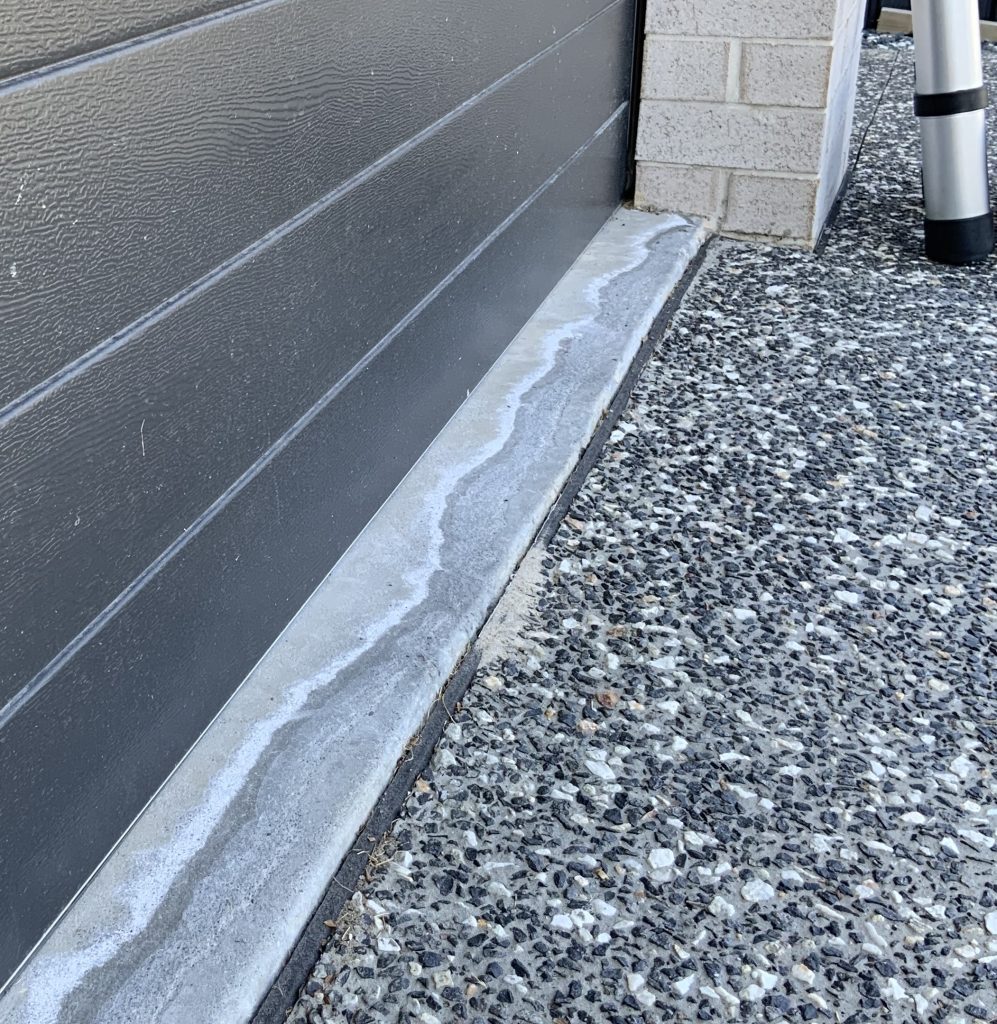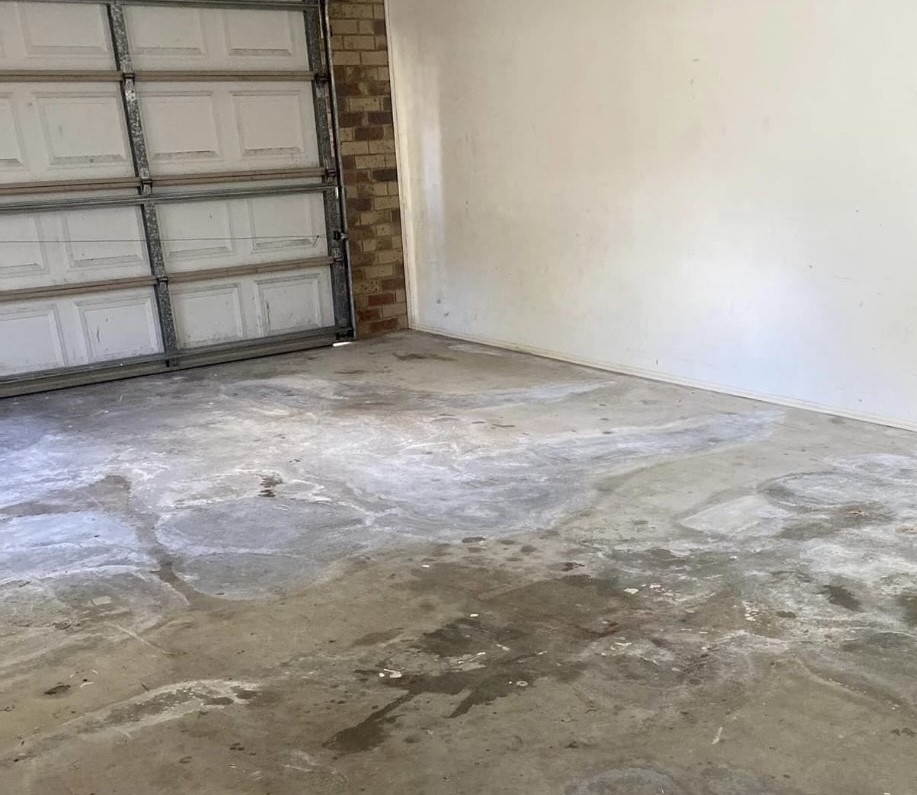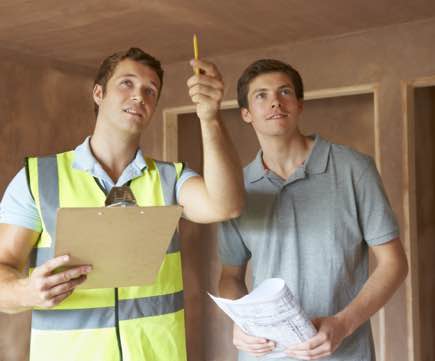The blistering or peeling of the paint at the base of your walls, the loss of bond between your floor tiles, or the smell of pungent odors coming from floor covering, such as carpets, are particularly disheartening when they’re found in modern homes, as they’re signaling an underlying construction issue known as slab edge dampness.
Slab edge dampness is typically more associated with older homes, especially those constructed before the widespread use of vapor barriers beneath slabs and those with aged and deteriorated waterproofing. However, slab edge dampness isn’t exclusive to older homes; new constructions might also suffer from these issues, especially if there were construction oversights.
In this guide, we’ll discuss what slab edge dampness is, what are your options for repair, and what role building and pest inspectors play in addressing slab edge dampness.
What Is Slab Edge Dampness?
Slab edge dampness refers to the moisture and dampness that can emerge on the surface of a concrete slab as a result of the slab’s face, or edge, being exposed to persistent dampness. In most cases, you’ll notice the symptoms of this underlying issue as a build-up of white powdery substance below the damp proof course (DPC).
DPC is a waterproof barrier designed to prevent moisture from rising up the walls, and the white substance is actually mineralized salts, a mineral residue drawn from the building materials and soils, left over when the moisture evaporates from the surface of the slab.
This means that you’re most likely to see the powdery substance accumulate at the baseboard/trim or at the grouting between the floor tiles. In case you have wall-to-wall carpets, the moisture within the slab will lead to bad odors, mold growth, rusting and corrosion of metal parts in contact with the slab, and paint blistering below the DPC.
In most cases, the slight exposure to dampness only affects the surface of the slabs. However, repeated and more extensive exposure can lead to moisture ingress on your concrete structures, which can have devastating consequences. That’s why it’s important to recognize the signs of slab edge dampness, especially when you’re purchasing a property.
Unfortunately, these signs are easily overlooked by an untrained eye, which is why it’s highly recommended that you back your property purchasing decision with expert advice.
Why Slab Edge Dampness Occurs?
Concrete, just like many other construction materials, is porous by nature, and when poured adjacent or directly on the ground without any proper barrier, it acts like a sponge, drawing moisture from the ground through something called capillary action.
Capillary action is the ability of a liquid to flow against gravity in narrow spaces, such as tiny air pockets or “pores” in various materials, without any assistance from external forces. Capillary action can also work in opposition to external forces; this is best exemplified by dipping a sponge in a tray of water and watching the water climb and defy gravity.
When it comes to concrete slabs that are in direct contact with the ground and without any adequate barrier, capillary action basically causes the moisture from the ground to rise through the pores of the slab. This leads to slab edge dampness, moisture ingress, and other issues that increase the chance of structural failure.
This usually affects older construction, but modern construction can suffer from slab edge dampness and moisture ingress, too. However, since using barriers is now required by the National Construction Code of Australia, instances of slab edge dampness and moisture ingress typically result from construction and post-construction oversights.
It’s important to note that slab edge dampness often goes unnoticed for prolonged periods. The issues are typically discovered when the conditions of the slab have deteriorated significantly. This is why it’s important to have the property inspected, regardless of whether you already own a particular property or you’re in the market for one.
What to Do About Slab Edge Dampness
The best measures for dealing with slab edge dampness are preventative, and they usually take place as part of the geotechnical investigation phase (commonly known as site investigation), which falls within the pre-construction stages of a construction project.
That’s when the soil is examined for moisture content, erosion potential, type, bearing capacity, and other characteristics relevant to construction, as they help design the appropriate foundation and plan for potential issues like water drainage and foundation settlement.
Every stage of the construction process, including pre-construction, construction, and post-construction landscaping, should be carefully considered to reduce the risk of slab edge dampness and moisture ingress. The best preventative measure is to find a qualified builder. However, if you’re already finding signs of slab edge dampness, there are several things you can do to alleviate or even completely eliminate the issue.
Inspect Your Property
The very first thing you should do is perform a thorough inspection of the property. This should include pest inspections, especially for termites, and an overall building inspection. This can help you identify any potential issues causing slab edge dampness.
However, we strongly recommend enlisting professional building inspectors for this step, as they have access to tools, hardware, and, most importantly, experience to properly inspect a property and help identify the cause of slab edge dampness.
Ensure Adequate Water Drainage
Sometimes, the cause might be inadequate water drainage, which poses a significant issue during heavy rainfalls. Adequate drainage implies two things: proper fall away from footing and slab and minimizing gutter overflow.
The former ensures that there’s proper fall away from the footing and the slab for all paved areas on the property that are adjacent to the slab. This prevents water retention and capillary action in the concrete.
The latter, however, implies revising your stormwater drainage. This includes adding more downpipes to minimize the overflow, preventing the excess water from spilling outside the gutters that are adjacent to the property’s walls and preventing water damage and dampness-related issues.
SUMMARY

Signs and symptoms of slab edge dampness usually become visible when the slabs have deteriorated significantly, perhaps to the point of irreparability. This is a massive issue, not just from the safety perspective but also from the financial standpoint; reparations are possible in some cases, but the associated costs are often very high.
This is why it’s important to periodically inspect your property for early signs of slab edge dampness, which might be elusive to the untrained eye. Fortunately, Co-Spec Building Inspections can help you identify signs of slab edge dampness early so you can take adequate action before it’s too late. Don’t hesitate to check our blog for more advice.




